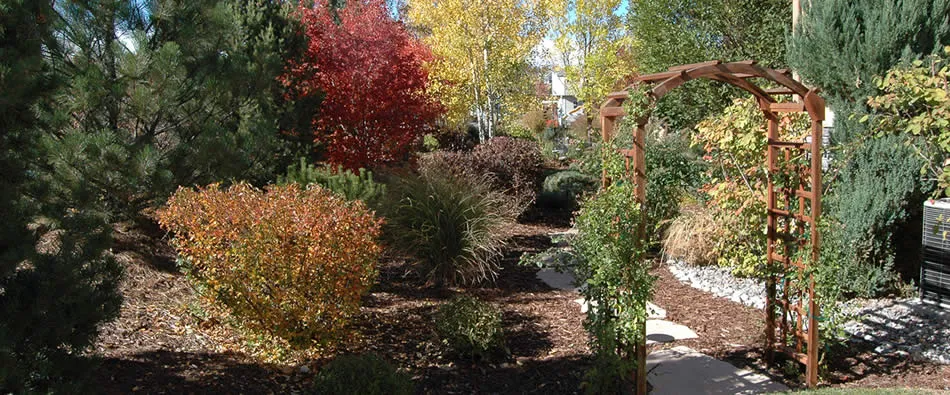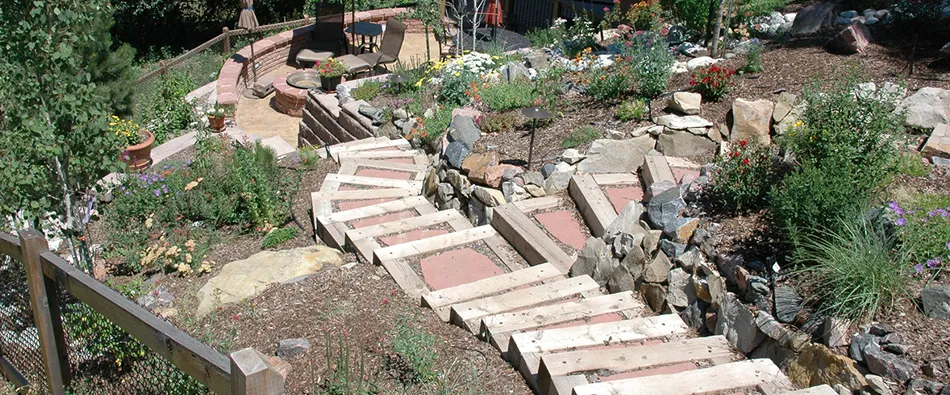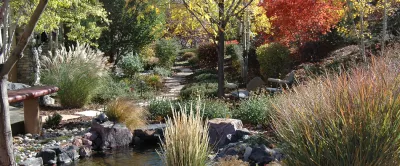Fertilizer salts may burn roots when there is insufficient soil moisture. Fertilizers applied in September may also stimulate top growth that could result in excess leaf area for the tree or shrub to maintain during periods of limited soil moisture. If adequate water is available, certain trees and shrubs that only put on one growth flush per year (pines, spruces, and firs) could benefit from a fall fertilization. With limited water supplies, do not fertilize these particular plants.
When leaves, needles, and twigs decompose on the ground, they provide nutrients naturally to plants. Often this is adequate fertilizer, especially for native trees and shrubs.
Store-bought fertilizers contain nitrogen (N) and other ingredients. When a plant gets extra nitrogen, it will grow more rapidly, which can result in better flowering, denser leaves, and larger plants. If you have sandy soils, adding phosphorous (P) will benefit your plants. Colorado soils contain plenty of potassium (K), so it is good to buy fertilizer that has as little as possible. A soil test will reveal what nutrients exist on your property.
Our alkaline soils can have little iron and other micro-nutrients available for plants. Iron chlorosis, where the leaves of a plant – turn yellow or whitish, it is a common sign of low iron levels. If considering a fertilizer with iron in it, look for chelated iron, as it is much more bio-available to plants than the less-expensive iron sulfate.
Organic fertilizers have become more popular and more available, but are more expensive and their nutrients release more slowly than chemical fertilizers. Be sure to avoid fertilizers that contain salt, like steer manure, as many Colorado soils have high salt content.
Often when we see a plant struggling, we think fertilizer will make it better, but often the opposite is true. Fertilizer can burn stressed plants, or signal for them to grow when they are struggling. Also, avoid using fertilizers on new plantings; let them adapt and grow some before fertilizing
Fertilizer is best used on plants at their peak growing cycle: just before flowering or leafing out. With plenty of moisture, plants can continue to take up fertilizer during their growing season, but discontinue use by fall.
Plants need more fertilizer when they get full sun and plenty of water. Conversely, plants in low-light and those in dry areas need much less fertilizer. Over-use of fertilizer can result in “leggy” or spindly plants, or can run-off into streams, causing environmental problems.
Renewed concern about the environment has stimulated interest in the use of organic fertilizers. A significant advantage of organic products is improved organic content in the soil which is key to successful gardening in Colorado soils.
Organic fertilizers are commonly processed from such things as manure, worm castings, peat moss, decomposed plants, fish meal, and feather meal. Organic fertilizers release nutrients at a slower, more consistent rate, avoiding problems such as fertilizer burn. Organic fertilizers break down into humus that builds the soil structure and moisture- and nutrient-retaining capabilities.
Organic fertilizers provide environmentally friendly macro and micro plant nutrients that are released as the organic matter decays. Organic fertilizers nearly always have lower concentrations of nutrients. If lawns and gardens appear pale green, nitrogen might need to be supplemented.
Inorganic or commercially manufactured nitrogen fertilizers are normally made from petroleum or natural gas. Typical release rates vary from a few days to a few weeks, giving a quick response after fertilizer application. The phosphate and potash in manufactured fertilizers generally are processed from rock deposits.
Because manufactured fertilizers are relatively high in nutrient content, only small amounts are required. Applying too much can cause leaves to become yellow or brown, which is sometimes known as “burning.” On sandy soils, an over application of nitrogen can leach into groundwater.
Both types of fertilizer can pollute groundwater, lakes, and streams when spilled or spread onto streets, sidewalks and driveways. Neither will pollute when correctly applied to lawns and garden soils.






